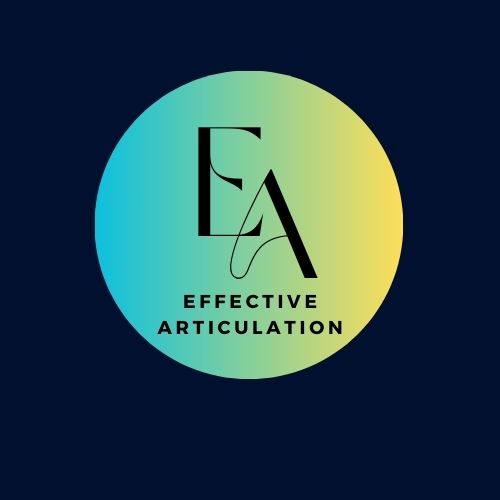Audience engagement isn’t just a buzzword. It’s the lifeline of a successful presentation.
Picture this: You’re presenting your latest project idea or findings, but your audience is dozing off or, worse, scrolling through their phones.
Engaging your audience makes them pay attention, keeps them interested, and helps them understand your points.
When people actively participate, they’re more likely to retain the information you’re sharing. It’s like flipping a switch in their brains.
Interactive and engaging elements during a presentation make the information stick. It turns passive listeners into active participants, and that makes all the difference.
Creating a lively and dynamic presentation environment isn’t about putting on a show, it’s about enhancing connection. When you engage with your audience, it feels personal and relevant.
This connection can make your audience more receptive to your message, whether you’re presenting in a small meeting or at a large conference.
Remember, it’s not just about distributing information. It’s also about creating a memorable experience. Engaged audiences are more likely to respond, ask questions, and remember what you’ve shared.
They’re not just sitting there—they’re a part of the experience you’ve crafted. Processes and strategies centered on participation kick presentations up a notch and transform them into something more impactful.
 Getpronounce – Use Pronounce AI voice recorder to check your speech for pronunciation, grammar, and better phrasing.
Getpronounce – Use Pronounce AI voice recorder to check your speech for pronunciation, grammar, and better phrasing.
Icebreaker Games to Kickstart Your Presentation
Starting a presentation can be nerve-wracking, but icebreaker games can set the stage perfectly. They’re not just quirky tricks but they’re building blocks for rapport.
Right from the get-go, icebreakers break down barriers and get people talking.
An icebreaker game can vary from a simple ‘two truths and a lie’ to more elaborate activities like scavenger hunts.
Choosing the right game depends on your audience size and the environment. A smaller group might love a personal sharing round, while a larger crowd might vibe with something quick and energetic.
Examples?
Sure!
Consider ‘Human Bingo’, where each participant has a bingo-style card filled with fun facts. Attendees mingle to find matching facts, getting to know each other in a relaxed, fun way. It’s a win-win: you set a friendly tone, and they start off engaged.
The goal isn’t to draw focus away from your presentation but to set the right mood. It doesn’t have to be a big production. Even a quick round of intros where everyone shares their name and a fun fact can work wonders for setting a warm, welcoming atmosphere.
Real success comes when everyone feels part of the session from the start. Icebreakers do more than lighten the mood—they invite your audience to lean in and participate actively, right from the jump.
Interactive Polls and Quizzes for Real-time Feedback

Interactive polls and quizzes aren’t just techie gimmicks. They’re powerhouse tools for keeping your audience in the loop and getting them involved.
Throw a question out there and instantly you get a snapshot of your audience’s thoughts, preferences, or understanding.
Using polls during your presentation can make it feel more like a conversation than a monologue. It’s all about making it a two-way street.
Polls let you gather opinions or check attendees’ knowledge in real time. Audience members see they’re not just passive spectators, but active contributors to the topic at hand.
Platforms like Mentimeter, Kahoot!, or even Zoom’s built-in polling feature are great options to consider. They’re user-friendly and add that interactive flair to your session. Plus, they’re accessible from any device, making participation a breeze.
Want to see these tools in action? Picture a marketing team using live polls during a presentation to gauge opinions on a new product feature. Feedback collected instantaneously helps shape the direction of the presentation and ensures it’s hitting the mark.
These interactive tools do more than engage. They inform your pacing and content on the fly. If a quiz or poll reveals a gap in your audience’s understanding, it’s a cue to elaborate before moving on.
Real-time feedback makes your presentation a tailored experience, boosting effectiveness.
Become a Superstar at your next Presentation
Group Discussions and Brainstorming Activities

Group discussions and brainstorming activities are like the secret sauce for boosting creativity and engagement in any presentation. They’re not just about hearing voices. They’re about making sure every voice gets a chance to shine.
Think of it like this: instead of one-way speaking, you’re opening the floor for a whirlpool of ideas. Setting up your discussion involves a bit of structure.
Clearly define the topic and the rules, making sure everyone knows what they need to do and when. A well-structured discussion keeps things flowing smoothly and productively.
When you involve people in small group discussions, they’re more likely to open up and share insights. Whether it’s a classic ‘think-pair-share’ activity or roundtable debates, they get those creative juices flowing and help participants feel more committed to the outcome.
Here’s a tip—play the role of a facilitator, not the commentator. Encouraging diverse viewpoints leads to richer discussions. By bouncing ideas around, you generate innovative solutions that might just surprise everyone involved.
Having a few prompts ready can guide conversation if it stalls. Questions like, ‘What are some challenges we see in implementing this?’ or ‘Who benefits from this idea the most?’ keep things on track. With brainstorming, there’s no such thing as a bad idea—encouraging a safe space for sharing is key.
Group dynamics bring a sense of camaraderie among participants. People remember how a meeting made them feel just as much as what was said. By bringing everyone’s voice to the table, it transforms your presentation into a collaborative canvas.
Gamification

Transform your presentation into a playful experience!
Switching up your presentation with gamification can seriously level up engagement. It’s all about adding a layer of fun and interactivity that grabs your audience’s attention and keeps them invested.
Gamification isn’t about playing games in the traditional sense—it’s about using game-like elements to make your presentation more compelling.
Think badges, leaderboards, and rewards for participation. These incentives can motivate attendees to stay focused and involved.
Consider using tools like Kahoot! for live trivia or interactive platforms that let you set challenges and award points. Imagine quizzing your audience on key points and watching them compete for top scores. It turns learning into a friendly battle of wits.
Picture a sales team meeting where participants earn points for pitching ideas or solving case studies. Points lead to small rewards or recognition, adding a bit of competition and excitement to the routine.
It’s crucial to gauge the comfort level of your audience with gamification. Some may prefer laid-back, narrative-driven formats, while others thrive in a competitive setting. Measure the impact by using feedback forms to see what worked or what might need tweaking next time.
Incorporating game mechanics into your presentation isn’t just about having fun—it’s a strategic move to enhance concentration and memory.
It’s a way of ensuring your message doesn’t just reach them but sticks with them long after the session ends.
I hope you found this post helpful! Please let us know what you think by leaving a comment below.
If you have any topics, you’d like to cover in future blog posts, please share your suggestions in the comments.
Disclosure: If you click on the affiliate links provided in this article and purchase the product, I will receive a small commission from the company of the product. You will not pay anything extra for your purchase. You can read the affiliate disclosure for more information.



6 thoughts on “Games To Engage Audience During Presentation”
Thanks for sharing these valuable insights. Your article is a great resource for anyone looking to make their presentations more engaging and effective.
It’s clear that you’ve tapped into the importance of making connections and turning passive listeners into active participants. The strategies you’ve outlined, from icebreaker games to gamification, are practical and creative ways to boost engagement and make presentations more memorable.
Thanks Shaun!
The article on Effective Articulation about engaging an audience during a presentation using games is a fantastic resource! It strikes the perfect balance between practical advice and creativity, offering actionable tips to captivate and energize an audience. The suggested games are not only innovative but also adaptable to various presentation styles and topics, making this guide versatile for different settings, from corporate meetings to classroom lectures.
I particularly enjoyed the way the article emphasizes the importance of interaction and breaking the monotony of traditional presentations. By incorporating games like icebreakers or trivia, the speaker can establish a stronger connection with the audience and maintain their attention throughout. This approach not only boosts engagement but also makes the presentation more memorable.
One question I have is: Are there any specific games or activities you recommend for virtual presentations to ensure the audience stays engaged, given the unique challenges of online formats?
Thank you for sharing these creative strategies! This article is a valuable tool for presenters looking to elevate their skills and deliver impactful, interactive sessions. I’ll definitely be keeping these ideas in mind for my next presentation.
Thank you so much for your thoughtful and positive feedback! I’m thrilled to hear that you found the article on engaging an audience through games useful and that the strategies resonated with you. It’s great to know that the balance of practicality and creativity came across in a way that will be adaptable to different settings.
As for your question about virtual presentations, you’re absolutely right—online formats do pose unique challenges. However, there are several great games and activities that work well in a virtual setting and can keep your audience engaged:
Virtual Polls and Quizzes: Tools like Slido or Mentimeter allow you to incorporate live polls, quizzes, and surveys into your presentation. These interactive elements not only capture attention but also give instant feedback, making the experience feel more dynamic.Breakout Room Discussions: If you’re using a platform like Zoom, dividing the audience into smaller breakout rooms for brief discussions or collaborative tasks can recreate the energy of in-person engagement. Afterward, participants can share insights or ideas with the larger group.Virtual Bingo or Scavenger Hunts: Customize a bingo card with key points you’re going to cover during your presentation or create a virtual scavenger hunt where participants must find answers to questions related to the content. This keeps them focused and actively engaged.Live Q&A with Gamified Elements: Incorporate a live Q&A session with a twist, where audience members can earn points for asking interesting questions, or the first to answer a quiz question gets a shout-out. This adds a competitive element that encourages participation.Emoji Reactions or Polling Chats: In platforms like Teams or Zoom, encourage the audience to use emoji reactions during key moments or respond to a poll in the chat. It’s an easy and quick way to keep them involved without interrupting the flow of the presentation.
By using these tools, you can create an interactive and lively atmosphere, even in a virtual setting, while keeping the audience engaged. It’s all about making the experience feel personal and fun, even if you’re not in the same room.
Thanks again for your great question, and I’m so glad you’re finding these ideas helpful for your upcoming presentation. Best of luck, and feel free to reach out if you need more suggestions!
Engaging an audience during a presentation can be challenging, but incorporating interactive games is a fantastic strategy. Activities like “PowerPoint Karaoke,” where presenters improvise based on unseen slides, not only add humor but also enhance spontaneity and adaptability.
Similarly, “Impromptu Speech” exercises, where participants speak on random topics without preparation, can boost confidence and quick thinking.
These methods transform presentations into dynamic experiences, fostering active participation and making the content more memorable.
Thank you for your feedback!